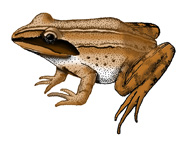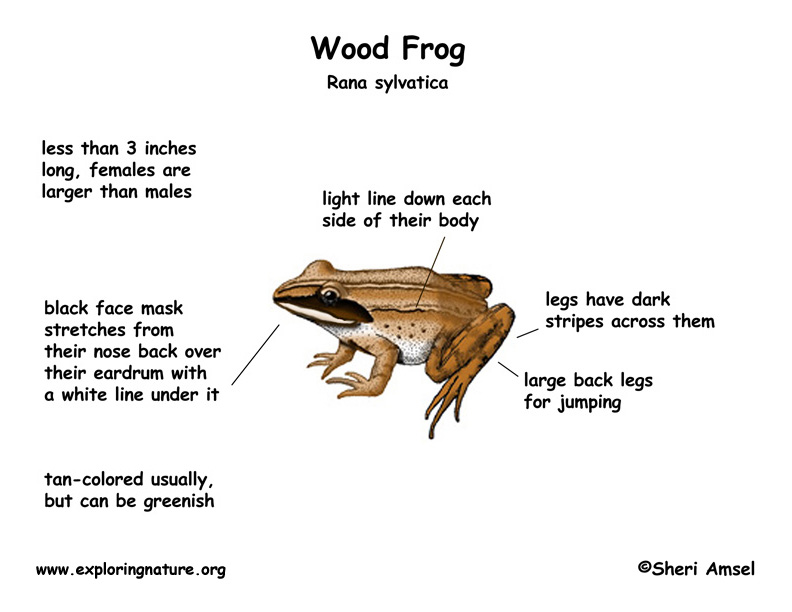

They are found from Alaska across Canada and down into the eastern U.S.
They live in forests near ponds or wetlands. They are found under logs and rocks and the leaf litter on the forest floor.
They are tan-colored usually, but can be greenish. A black face mask stretches from their nose back over their eardrum with a white line under it. They have a light line down each side of their body. They are less than 3 inches long. Females are larger than males.
They can actually survive freezing and thawing.
They eat insects, snails, slugs, spiders and other small forest animals.
They are eaten by raccoons and herons.
The female will lay thousands of eggs in a gooey mass in the deepest part of a pond. After a while the egg mass flattens out and floats to the surface of water. The jelly around the eggs turns green with algae and looks like floating pond scum. This is good camouflage for the eggs until they hatch.
Kingdom: Animalia
Phylum: Chordata
Class: Amphibia
Order: Anura
Family: Ranidae
Genus: Rana
Species: R. sylvatica
When you research information you must cite the reference. Citing for websites is different from citing from books, magazines and periodicals. The style of citing shown here is from the MLA Style Citations (Modern Language Association).
When citing a WEBSITE the general format is as follows.
Author Last Name, First Name(s). "Title: Subtitle of Part of Web Page, if appropriate." Title: Subtitle: Section of Page if appropriate. Sponsoring/Publishing Agency, If Given. Additional significant descriptive information. Date of Electronic Publication or other Date, such as Last Updated. Day Month Year of access < URL >.
Amsel, Sheri. "Frog (Wood)" Exploring Nature Educational Resource ©2005-2024. December 13, 2024
< http://www.exploringnature.org/db/view/Frog-Wood >


